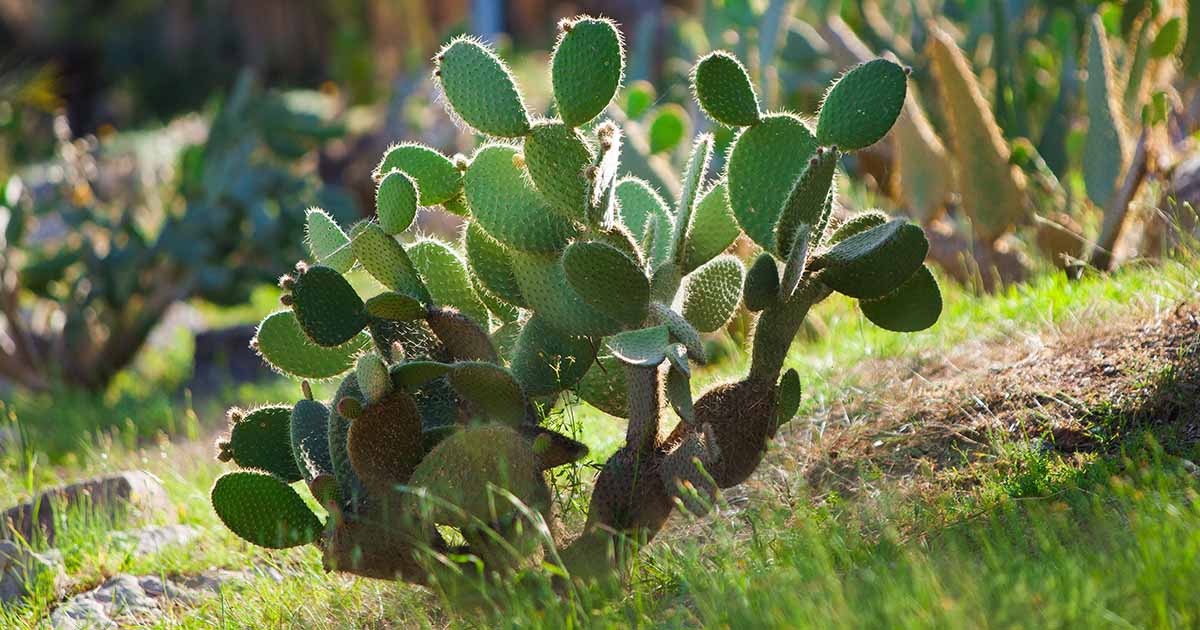
The prickly, toughened exterior of a cactus won’t look too inviting. However to sure critters in search of meals and shelter, it’s truly fairly alluring.
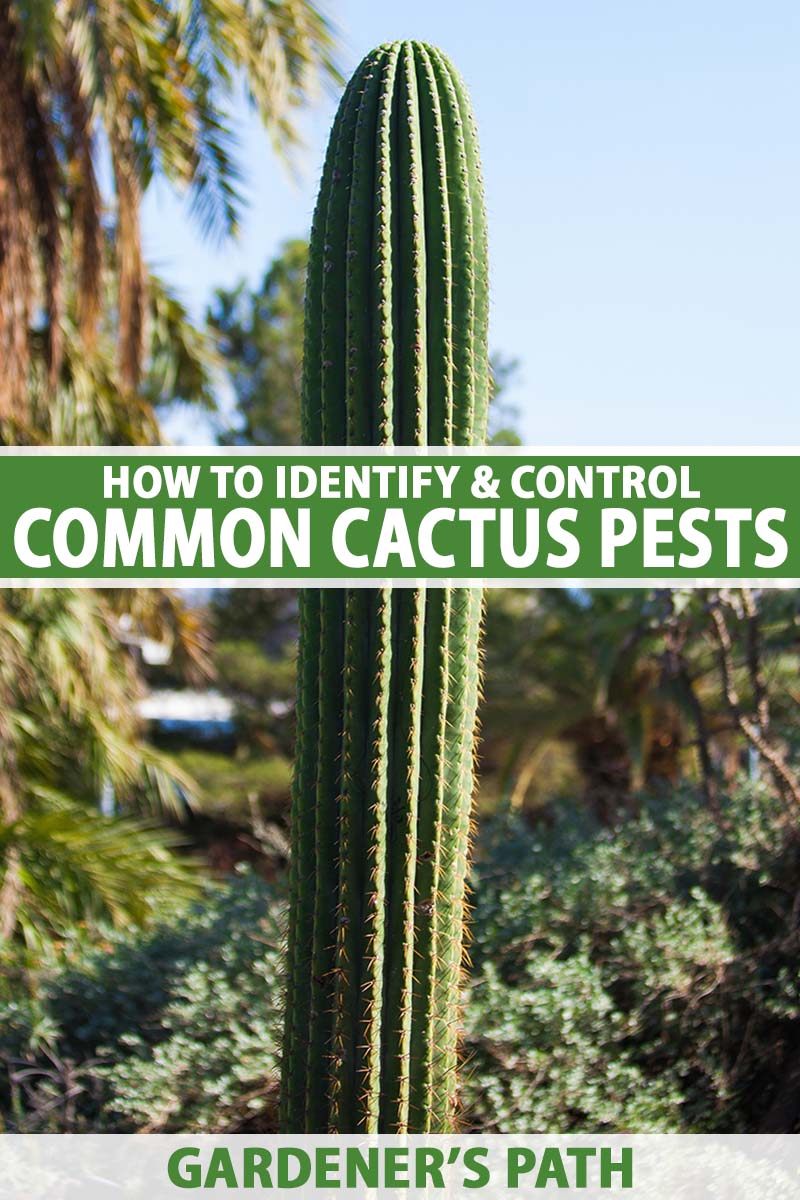
We hyperlink to distributors that can assist you discover related merchandise. For those who purchase from one among our hyperlinks, we could earn a fee.
In some ways, cacti are the last word survivors.
Options resembling water-conserving stems, modified spiny leaves, and a crassulacean acid metabolism enable these crops to dwell in blistering desert environments that would go away weaker crops shriveled, cooked heaps of dehydrated vegetation.
However they’re not invincible. I imply, don’t get it twisted: the rugged morphology of a cactus is a robust deterrent for a lot of animals. However different creatures are, as the children say, “constructed totally different.”
For a cactus to not simply survive however thrive, it’s essential to do your darndest to maintain pests away. Most of them received’t harm your prickly crops that severely, however prevention and administration efforts could make a big aesthetic distinction in the long term.
This information gives the low-down on 11 sorts of cactus pests, and walks you thru every part you could know to manage them, in addition to retaining them away from the get-go.
Let’s boogie!
However first, some phrases of warning:
The surfaces of cacti are coated in oils and waxes which can be very efficient at stopping water loss.
Nonetheless, they will also be notably inclined to break from sure insecticidal soaps and excessive concentrations of neem oil – extra so than different crops.
Due to this fact, it’s crucial to double-check the compatibility of your chosen chemical controls with the species that you simply plan to make use of them on.
Product labels, the opinions of expert succulent growers, and supplemental analysis can all be very useful on this area.
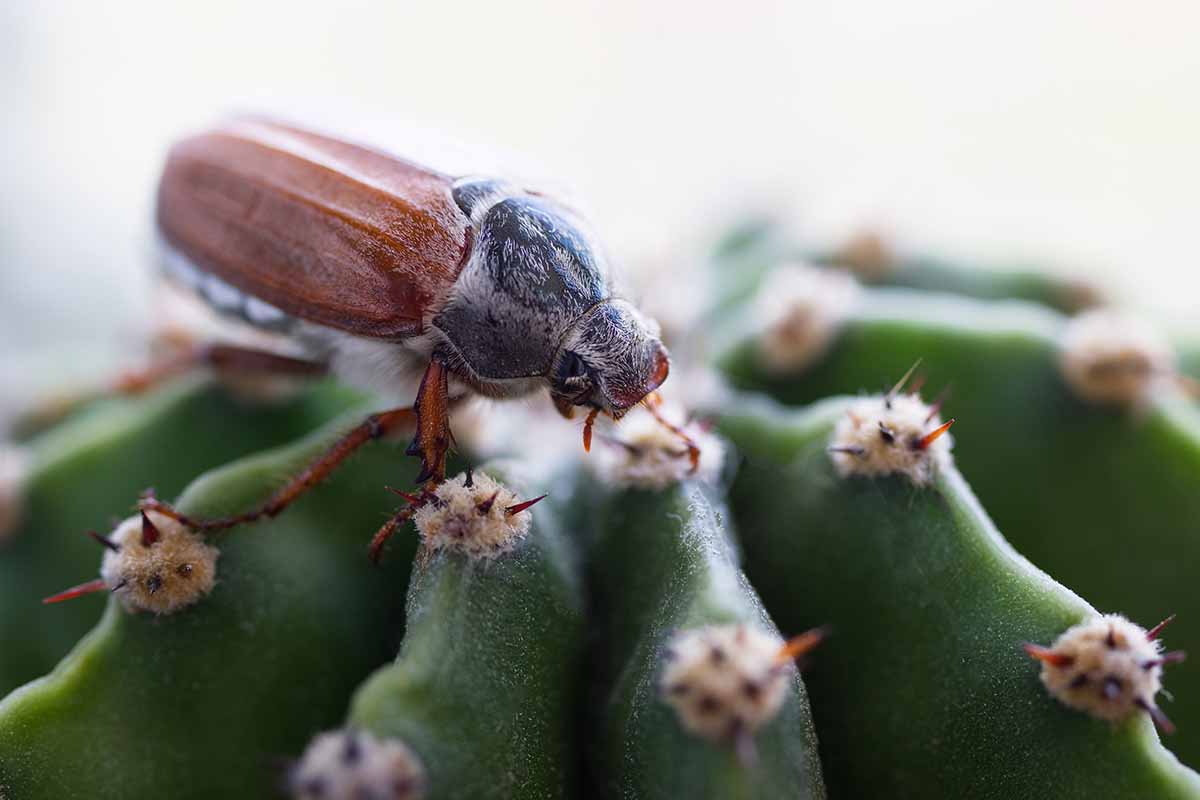
You may as well take issues into your individual fingers and discover out for your self by testing your alternative of chemical compounds on a small portion of your plant first, simply to see the way it reacts.
This does add a bit time to your pest administration plan, nevertheless it’s higher than simply assuming security, making use of it wholesale, and leaving your whole specimen broken.
For those who do spray a cactus with harsh chemical compounds that would doubtlessly disrupt its protecting coating, make certain to take action within the night to mitigate any solar harm that would consequence.
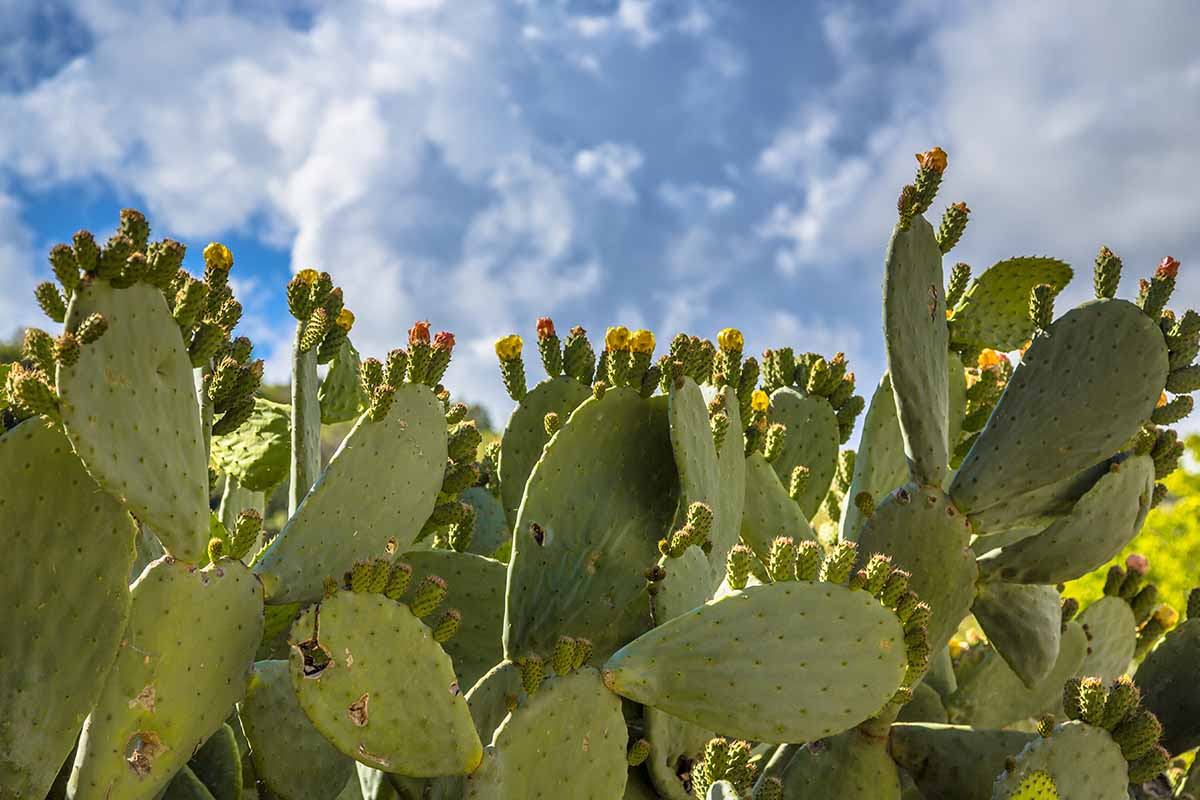
And right here’s one final piece of recommendation, whatever the varieties of crops and pests that you simply’re coping with: correct cultivation is totally important for stopping pest issues.
Very like canine can scent concern and mothers can sense when one thing is mistaken, pests can inform when a plant is unhealthy.
And since unhealthy crops are simpler to infest and hurt than wholesome ones, it pays to maintain your specimens in tip-top physiological type.
1. Aphids
I do know we’re technically doing this alphabetically, nevertheless it additionally makes logical sense to start out our checklist off with aphids.
For those who’ve been a inexperienced thumb for any vital period of time, you then’ve in all probability encountered or no less than heard of those annoying bugs already.
Small, soft-bodied, and translucent, aphids are available black, yellow, pink, inexperienced, whitish, and grey colours.
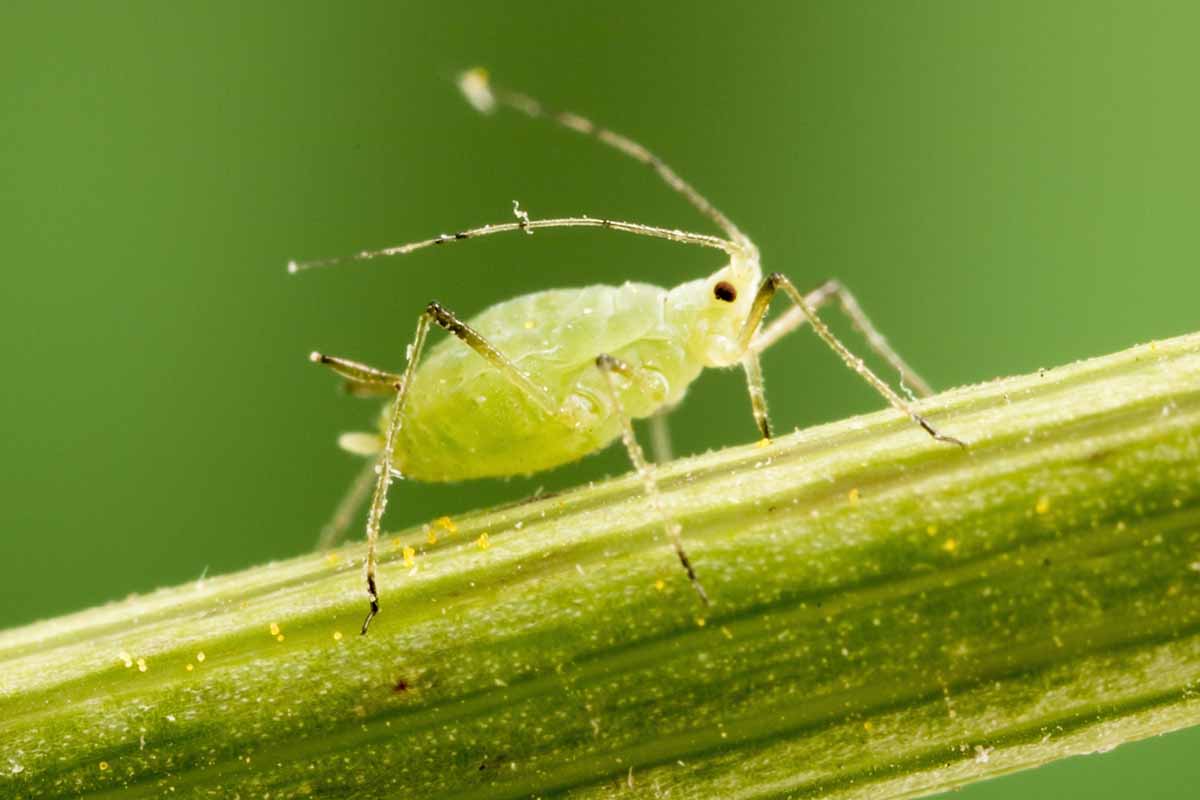
Utilizing their piercing-sucking mouthparts, aphids extract very important fluids from plant tissues, which may end up in stunted development. Plus, they excrete honeydew, which might result in the formation of black sooty mould.
Robust sprays of water ought to blast these pests proper off of infested surfaces.
To deal with crops in indoor areas that you simply’d quite not soak with high-velocity agua, strive light sprays of horticultural oil or diluted isopropyl alcohol.
For the latter, go together with a 70 % isopropyl alcohol resolution.
That’s only for the foliar-feeding sorts, although.
Some sorts of aphids infest the belowground roots of cacti, which might trigger chlorosis, wilting, and stunted development above the soil line.
These will be handled with soil drenches of imidacloprid or dinotefuran, and infestations will be prevented by working diatomaceous earth into the soil above the foundation zone.
Want OMRI-certified horticultural oil? Monterey sells some in concentrated and in ready-to-use varieties at Arbico Organics.
2. Coreids
Often known as “cactus bugs” or Chelinidea vittiger, cactus coreids are true bugs from the order Hemiptera.
Nymphs hatch from tiny, reddish-brown eggs laid on the underside of cactus spines in spring. Because the juveniles develop and mature via 5 instar phases, they enhance in dimension and lose their largely inexperienced to orange coloration.
C. vittiger adults are solely darkish brown to black in hue, save for vibrant orange to inexperienced stripes on their heads and across the perimeter of their backs.
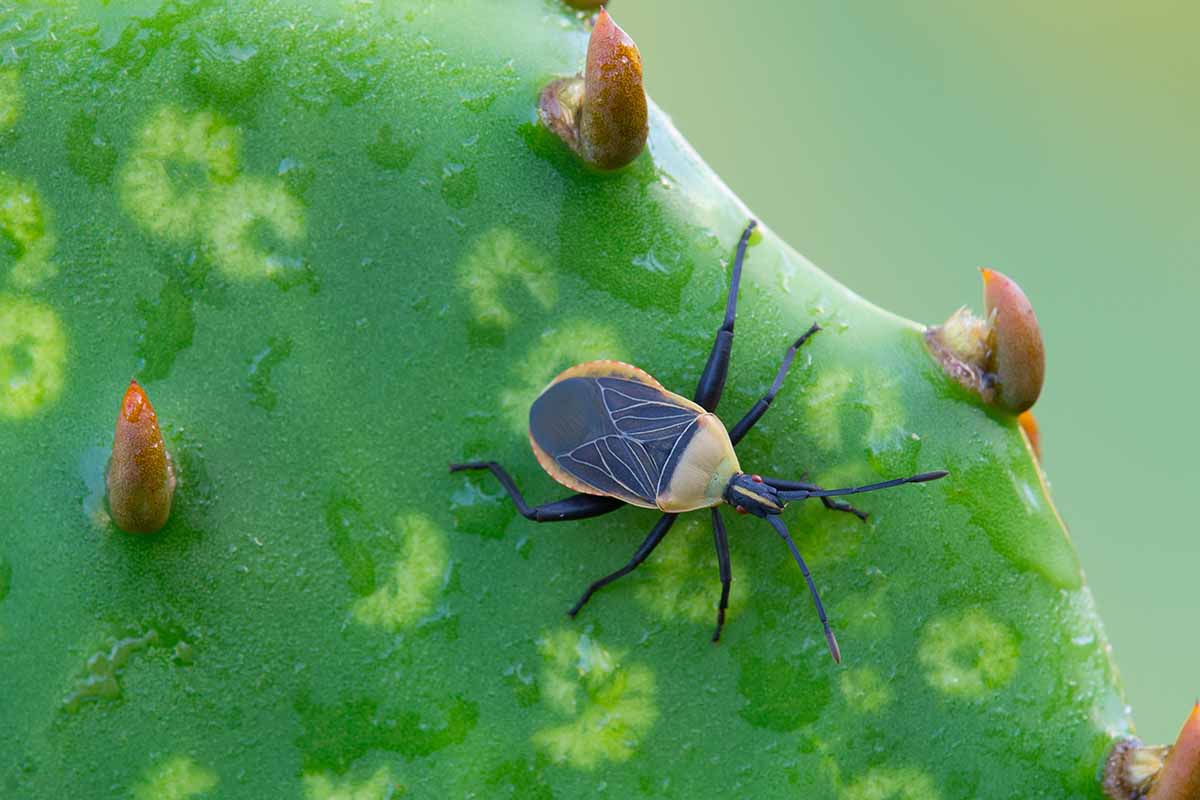
These pests use their piercing-sucking mouthparts to extract sap from cactus flowers, fruits, and pads, leaving round, light-colored blemishes behind.
Over time, the spots can merge, leaving whole constructions pitted, yellowed, and necrotic. In time, vital populations can kill a plant outright.
Nymphs are greatest managed with applicable insecticidal soaps and horticultural oils, whereas adults will be managed and infestations prevented with foliar sprays or soil drenches containing imidacloprid.
Acetamiprid will also be used as a foliar spray, if you happen to’d like a extra environmentally benign neonicotinoid choice.
You may as well try to pluck these bugs off of infested crops and crush them, when you’ve got a Mr. Miyagi-like expertise for grabbing agile bugs.
Mild sprays of water can drive the bugs up crops, if you happen to want a strategic benefit.
Bonide Insecticidal Cleaning soap
You possibly can whip up your individual insecticidal cleaning soap by including just a few drops of dish cleaning soap per quart of water.
Alternatively, Bonide provides 12- and 32-ounce spray bottles of their bug-killing formulation, accessible by way of Arbico Organics.
3. Fungus Gnats
As if “gnat” wasn’t gross sufficient…
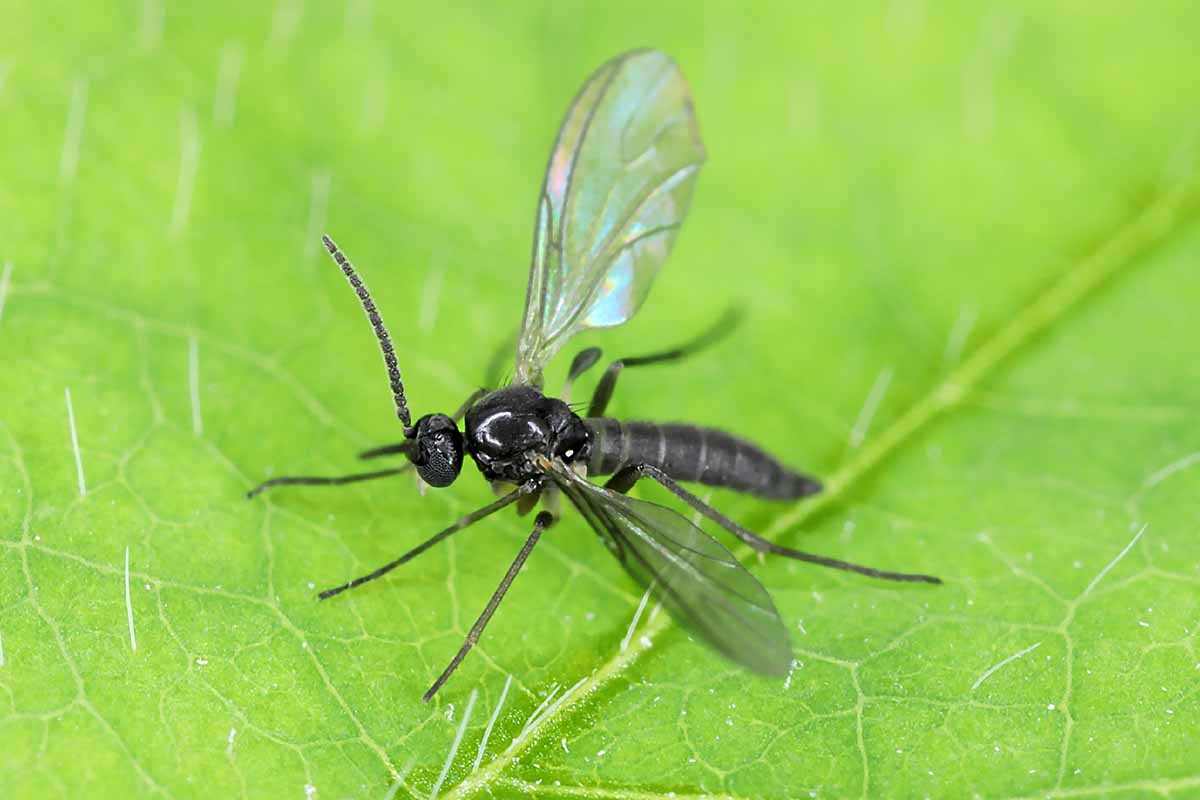
Fungus gnats are mosquito-like black flies which can be sometimes seen hovering above the soil line. The adults are innocent, however their soilborne larvae are keen on consuming cacti roots.
This isn’t often sufficient to kill grownup specimens, nevertheless it’ll actually do a quantity on juveniles and seedlings.
Visits from these pests will be prevented by avoiding overwatering your cacti, since fungus gnats love laying eggs in tremendous soggy soils.
In case your soil is already drenched, enable it to dry out in full solar as quickly as potential.
Learn extra about defending houseplants from fungus gnats in our information.
4. Longhorn Beetles
Consisting of 20 species from the Moneilema genus, cactus longhorn beetles are simply identifiable in grownup type by their pitted, shiny, black, and sometimes white-mottled, arduous shells.
The grubs are gentle and darkish tan, with brown heads.
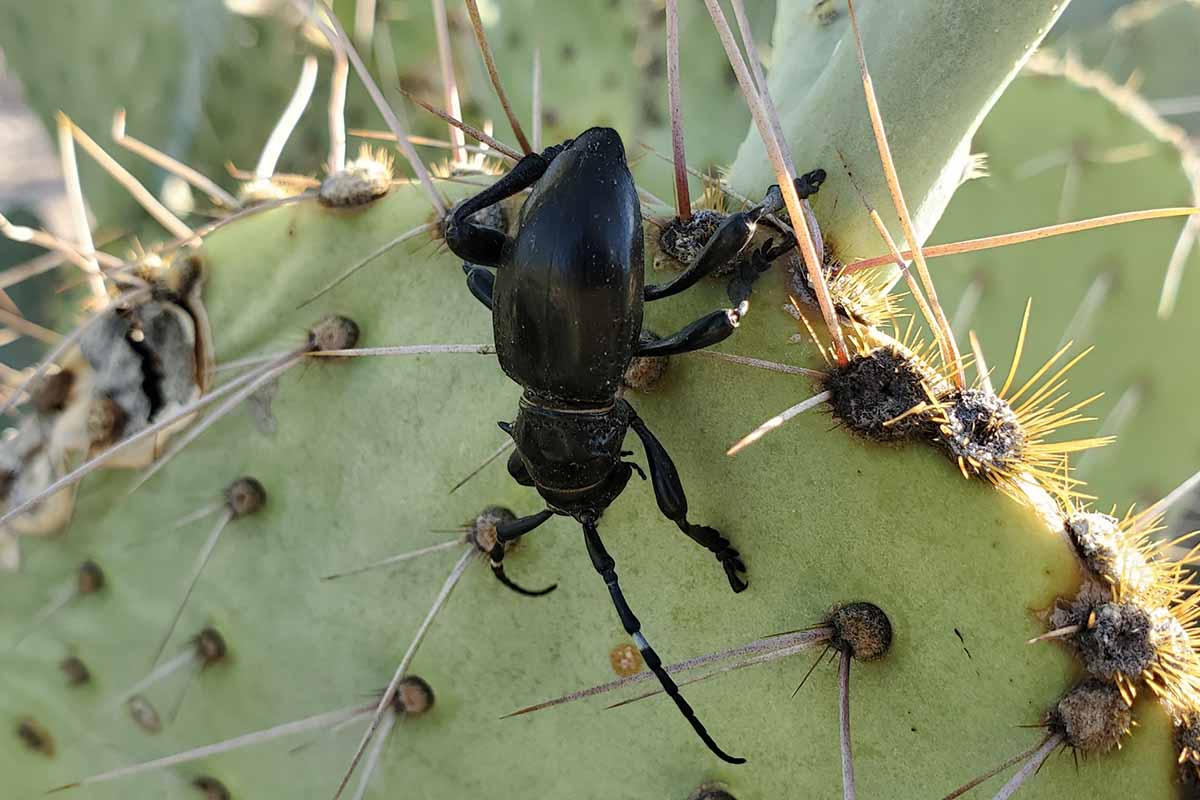
Lively from spring to fall, these nocturnal beetles dwell among the many sharp spines of cacti, feeding on the tender development between them.
After mating in spring to summer season, the females lay eggs on the base of plant stems.
As soon as they hatch, the larvae burrow into the cacti to feed, leaving black, gooey, tunnel-sealing lots behind them. Inside the crops, the larvae pupate and mature to maturity.
All of this feeding ends in aboveground harm, yellowing, gentle spots, rotted tissue, and hollowed-out stems. This leaves the infested specimen open to pathogens, and should even kill it in extreme instances.
You possibly can management these pests by going out within the evenings at the beginning of their mating season with 12-inch tweezers, which’ll assist you to decide the pests off whereas staying away from the sharp spines.
Put on gloves to guard your fingers from the beetles’ skin-puncturing mandibles.
When you’ve caught them, kill ’em useless by freezing them or crushing them underfoot. For those who do that earlier than eggs will be laid, you then’ll be stopping larval harm, too.
Study extra about cactus longhorn beetles in our information.
5. Mealybugs
One other pest of the piercing-sucking selection, mealybugs are flat, oval-shaped, and coated with a mealy white wax.
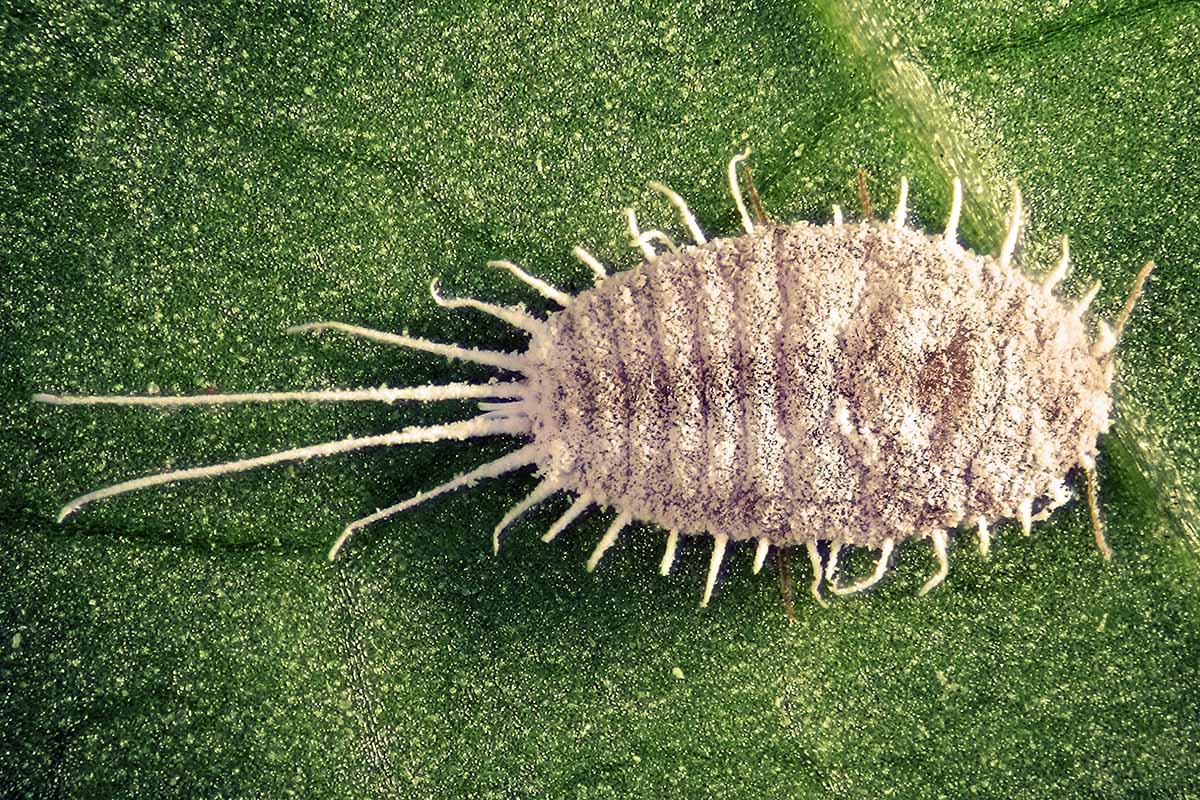
These pests extract very important plant juices, which ends up in weakened development, distortion, and probably even the dying of the cactus.
Mealybugs additionally excrete honeydew, which results in that gnarly sooty mould that’s so ugly and unhealthy.
Robust sprays of water ought to knock mealybugs off of sturdy cacti, and 70 % isopropyl rubbing alcohol will be rubbed on mealybugs by way of soaked cotton swabs.
Direct functions of permethrin and neem oil can work as nicely.
Study extra about mealybug identification and management in our information.
6. Moths
Often known as Cactoblastis cactorum, the cactus moth is a South American native that has proved itself a big invasive species within the southeastern United States.
The larvae are over an inch lengthy and coloured orange with black stripes, whereas the adults are grayish-brown moths, with a wingspan of about an inch.

Grownup females lay chains of 70 to 90 eggs in stick-like protrusions on cactus pads. Once they hatch, they eat the pads from the within out, which might hole out infested constructions in time.
After feeding sufficiently, they emerge, cocoon themselves, and pupate on the bottom close to the bases of crops, ultimately rising as adults to proceed the cycle elsewhere.
Cacti infested with massive numbers of C. cactorum larvae can simply be killed. The perfect type of management is promptly eradicating the conspicuous “egg sticks,” in addition to any infested pads.
Moreover, reaching out to native extension brokers could also be useful for each events – they might have extra suggestions, and also you’ll be informing them of close by invasive species exercise.
7. Root-Knot Nematodes
Armed with sharp stylets and a really enjoyable scientific title to pronounce, root-knot nematodes are microscopic, eel-esque roundworms from the Meloidogyne genus.
Dwelling within the soil close to crops, they puncture the roots with their stylets, which triggers them to swell with knot-like galls. These puncture wounds additionally create entry factors that micro organism and fungi can use to enter the roots.

These galls restrict the plant’s uptake of water and vitamins, whereas additionally giving the nematodes a spot to feed and develop.
Above the soil line, signs resembling distortion, chlorosis, and stunted development can change into obvious.
It’s greatest to give attention to prevention, since administration will be tough. Utilizing sterile soils, soilless media, and planting in containers might help to stop nematodes.
Extra ideas for root-knot nematode management will be present in our information.
8. Scale
A number of varieties of scale are identified to infest cacti, from cochineal scale to brown gentle scale.

These spherical, flat, piercing-sucking pests extract plant sap, which additionally finally ends up sucking away the plant’s vigor.
Scale additionally excrete the ant-attracting and sooty mold-promoting nastiness often called honeydew, which positively go away their hosts worse off.
At first, you’ll wish to quarantine your infested crops, if potential. Transfer potted specimens to their very own quarters to stop additional unfold.
Scale will be blasted off with sturdy bursts of water, pried off by hand, and even scraped off with hard-edged instruments.
Sprays of isopropyl alcohol and insecticidal cleaning soap additionally do the trick. Severely infested and stricken constructions ought to be pruned, and crops past saving ought to be eradicated.
Extra scale administration methods will be present in our information.
9. Slugs and Snails
Slugs and snails are notoriously gross and sluggish members of the mollusk phylum.
Whereas the previous lacks an exterior shell and the latter has one, each use a muscular, mucus-secreting foot to maneuver round.
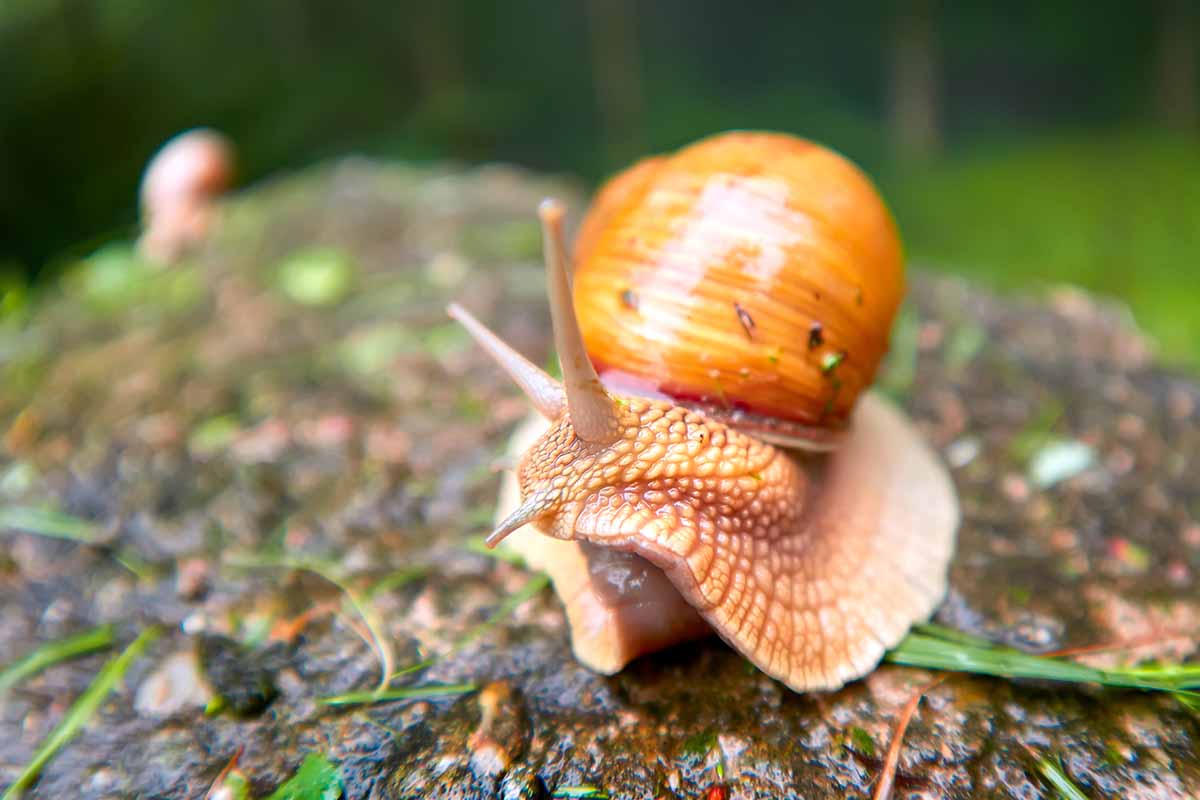
Additionally they each use abrasive tongues to go away irregular, but smooth-edged feeding holes across the spines of cacti.
Full solar is tough on these creatures, so they have an inclination to do their feeding at nighttime or on overcast days.
Make sure you modify the close by setting to take away shelters for these pests by eradicating issues that slugs and snails might use for shade: rocks, massive weeds, and so forth.
Place traps close to the stuff that you simply can’t transfer, resembling outside constructions and beloved plantings.
For a three-pack of efficient slug and snail traps, go go to Gardener’s Provide Firm!
You may as well exit at evening with a flashlight and decide slugs and snails off of your plant by hand. Once you’ve acquired them, you’ll be able to crush them or throw them away in a trash bag.
For those who’re , extra slug and snail administration ideas will be discovered right here.
10. Spider Mites
Coming in quite a lot of totally different colours, spider mites are arachnids that may harm cacti by sucking out plant juices, leaving small brown feeding dots and clumps of webbing of their wake.
With time and elevated severity, this feeding can result in chlorosis and general deterioration.
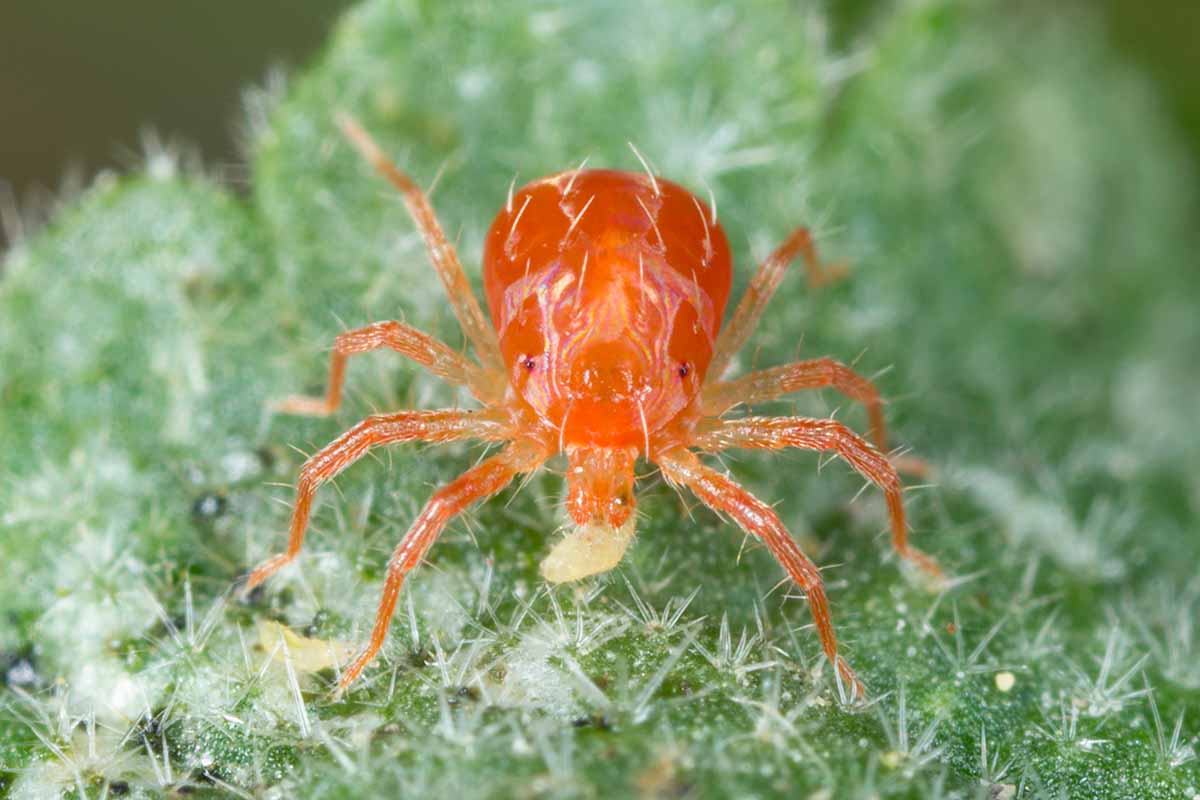
At a fiftieth of an inch in size, spider mites are very small – it’s arduous to make them out with out a hand lens, or maybe the magnification app in your telephone, if you happen to’re cutting-edge.
Insecticidal cleaning soap, neem oil, and robust sprays of water are all strong management measures.
Study extra about managing spider mites in our information.
11. Vertebrates
It’s not simply the spineless creepy-crawlies that may feast in your cacti. Birds and mammals can also have at them.
Varied species of birds can peck at your cacti, leaving unpleasant feeding wounds of their flesh.
If the harm seems like a beak did it and there’s chicken scat on the close by soil besides, congratulations: you’ve acquired birds!
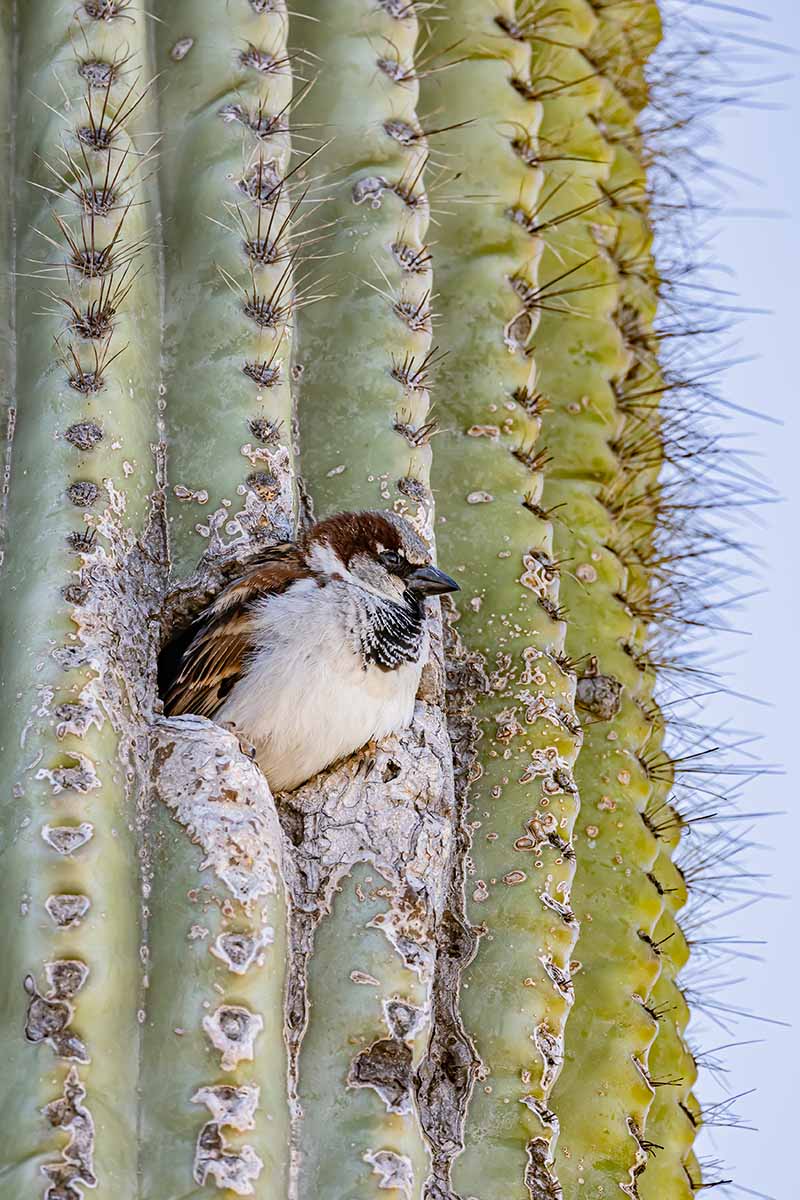
Birds are greatest stored at bay with visible and/or auditory deterrents. Reflective supplies, decoy birds of prey, massive “scare eyes,” programmable noise machines, and banging pots and pans are all efficient selections.
Irrespective of the way you select to discourage birds, it’s important to combine it up each one to 2 weeks, as birds will rapidly change into used to any given deterrent.
Cacti will also be munched on by rabbits and rodents resembling rats, gophers, and floor squirrels.
Whether or not they go to city or simply take a curious chew or two, these pests positively warrant your consideration.
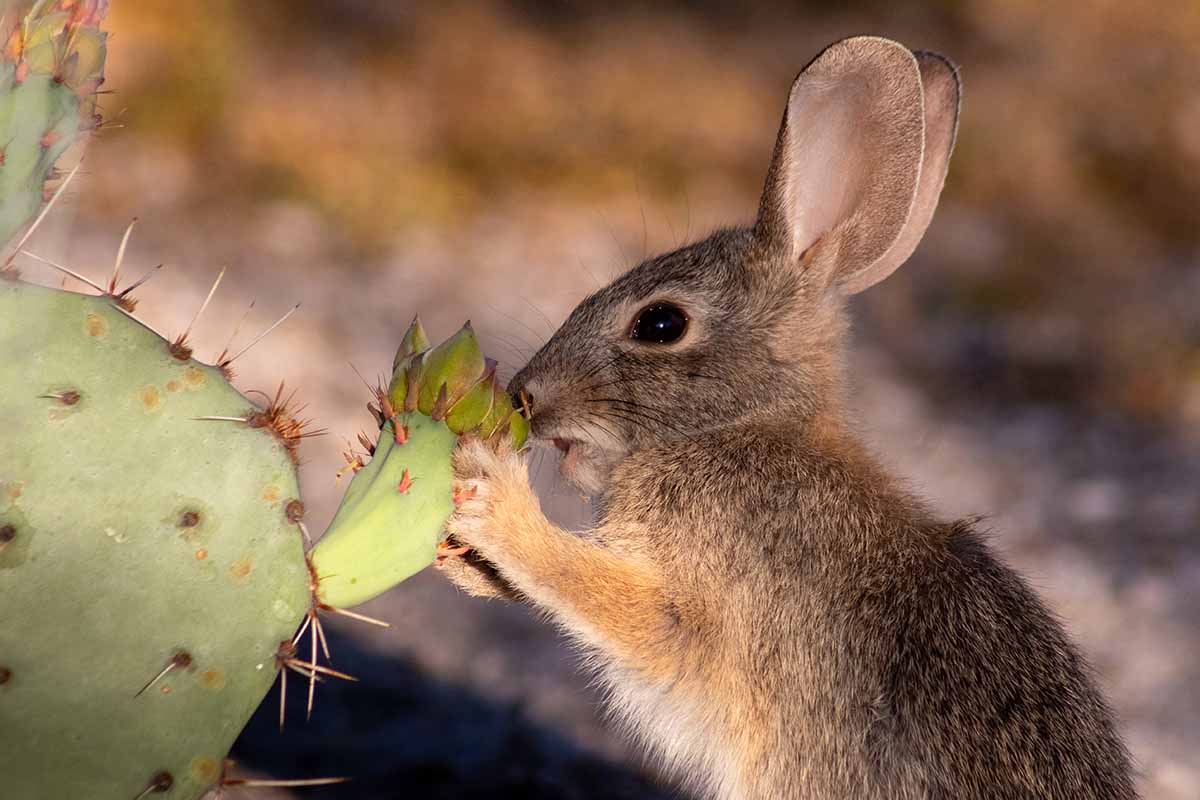
Surrounding your specimens with wire fencing that’s 4 ft tall and buried 4 to 6 inches deep ought to maintain out rabbits and gophers, whereas the climbers ought to be stored away with species-specific repellents.
Inserting mint crops close by can even work as a pure deterrent.
Managing Pests of Cactus Simply Takes Follow
Now that you’ve the know-how needed for coping with cacti pests, all that’s left is to place it into apply! The perfect trainer is expertise, in any case.

Once they’re stored wholesome, cacti are actually wonderful. And with the right pest administration, yours are positive to be as nicely.
Any additional questions? Pest issues of your individual to share? All of this and extra can go within the feedback part!
Want some cacti crops to maintain pest-free? These three are a incredible trio to start out with:


